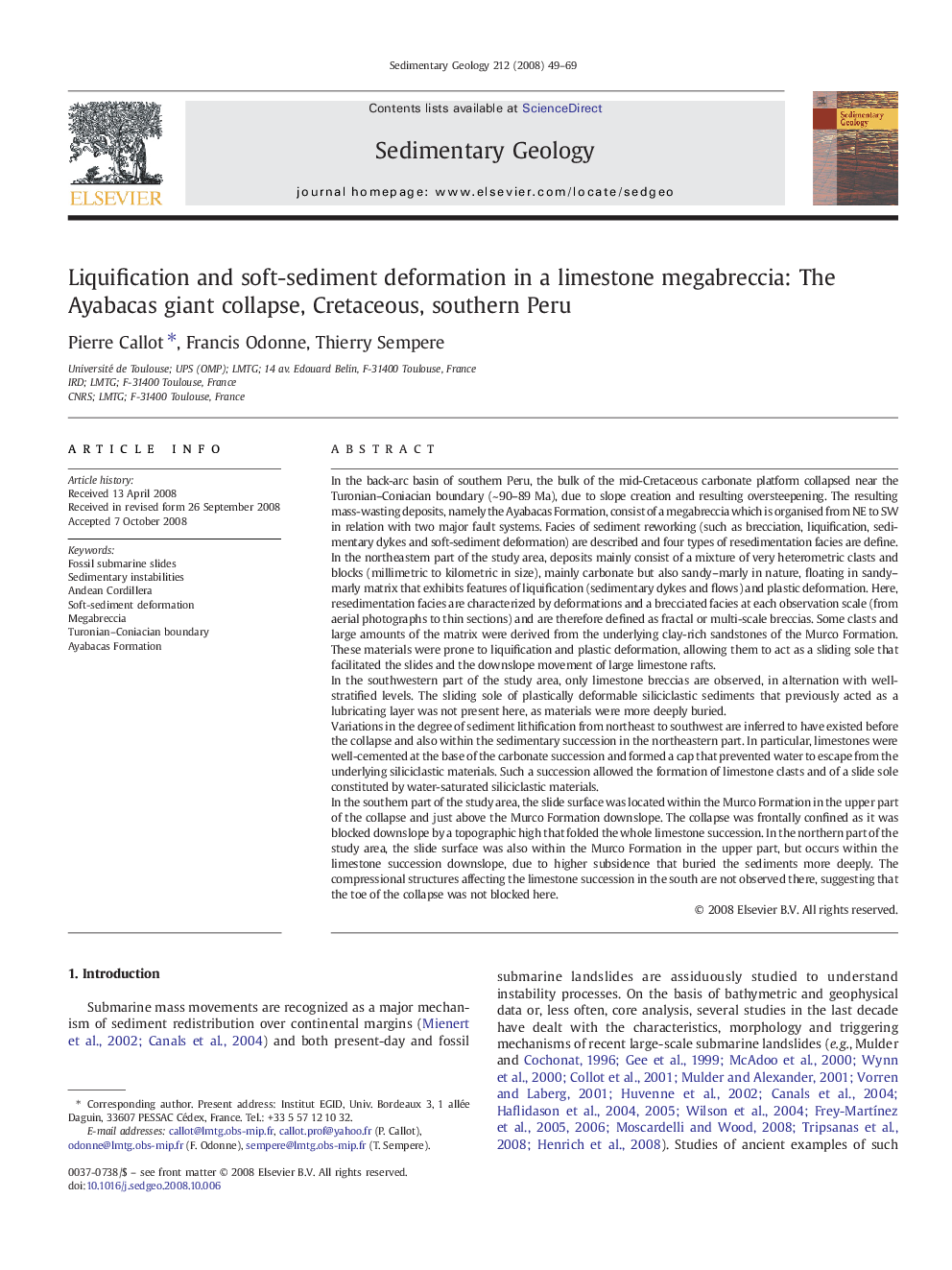| Article ID | Journal | Published Year | Pages | File Type |
|---|---|---|---|---|
| 4690422 | Sedimentary Geology | 2008 | 21 Pages |
In the back-arc basin of southern Peru, the bulk of the mid-Cretaceous carbonate platform collapsed near the Turonian–Coniacian boundary (~ 90–89 Ma), due to slope creation and resulting oversteepening. The resulting mass-wasting deposits, namely the Ayabacas Formation, consist of a megabreccia which is organised from NE to SW in relation with two major fault systems. Facies of sediment reworking (such as brecciation, liquification, sedimentary dykes and soft-sediment deformation) are described and four types of resedimentation facies are define.In the northeastern part of the study area, deposits mainly consist of a mixture of very heterometric clasts and blocks (millimetric to kilometric in size), mainly carbonate but also sandy–marly in nature, floating in sandy–marly matrix that exhibits features of liquification (sedimentary dykes and flows) and plastic deformation. Here, resedimentation facies are characterized by deformations and a brecciated facies at each observation scale (from aerial photographs to thin sections) and are therefore defined as fractal or multi-scale breccias. Some clasts and large amounts of the matrix were derived from the underlying clay-rich sandstones of the Murco Formation. These materials were prone to liquification and plastic deformation, allowing them to act as a sliding sole that facilitated the slides and the downslope movement of large limestone rafts.In the southwestern part of the study area, only limestone breccias are observed, in alternation with well-stratified levels. The sliding sole of plastically deformable siliciclastic sediments that previously acted as a lubricating layer was not present here, as materials were more deeply buried.Variations in the degree of sediment lithification from northeast to southwest are inferred to have existed before the collapse and also within the sedimentary succession in the northeastern part. In particular, limestones were well-cemented at the base of the carbonate succession and formed a cap that prevented water to escape from the underlying siliciclastic materials. Such a succession allowed the formation of limestone clasts and of a slide sole constituted by water-saturated siliciclastic materials.In the southern part of the study area, the slide surface was located within the Murco Formation in the upper part of the collapse and just above the Murco Formation downslope. The collapse was frontally confined as it was blocked downslope by a topographic high that folded the whole limestone succession. In the northern part of the study area, the slide surface was also within the Murco Formation in the upper part, but occurs within the limestone succession downslope, due to higher subsidence that buried the sediments more deeply. The compressional structures affecting the limestone succession in the south are not observed there, suggesting that the toe of the collapse was not blocked here.
